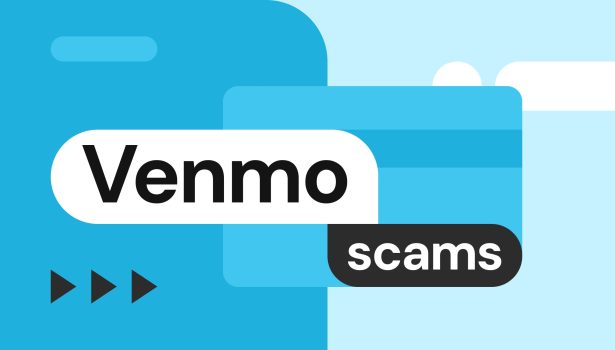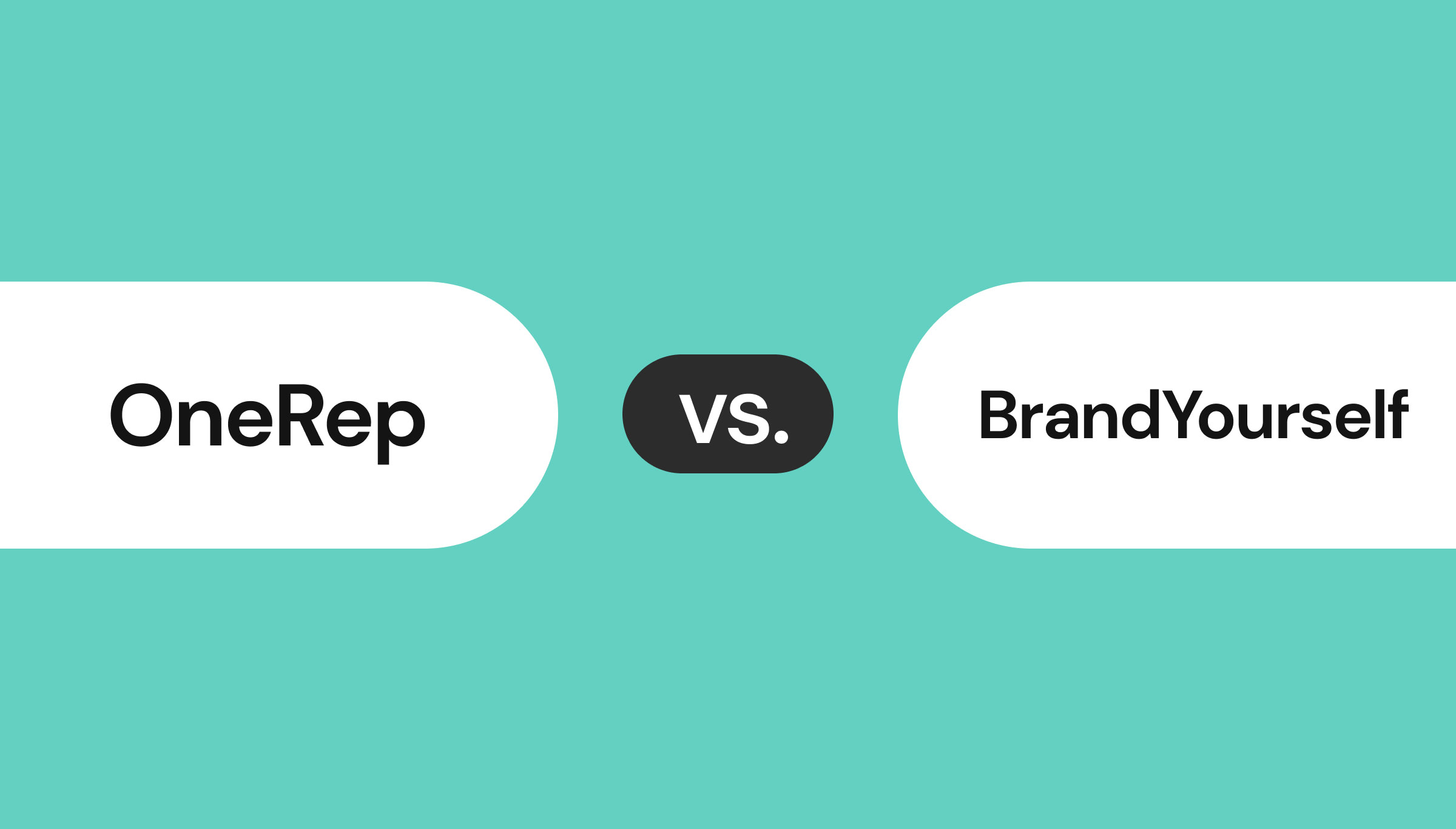Venmo scams: how to recognize, avoid, and recover from fraud

Can you get scammed on Venmo? As an easy peer-to-peer payment service, Venmo has become popular with regular users, businesses and—yes—scammers. This means you can indeed get scammed on Venmo, but staying alert to common signs of fraud and impersonation will protect you from falling victim.
Understanding Venmo’s vulnerabilities
Venmo started in the U.S. in 2009 as a fast and handy mobile payment app, which was later bought by PayPal as part of its Braintree acquisition deal. Venmo has since grown to over 80 million active users annually, mostly based in the U.S.
The app targets friends, families, local businesses and the self-employed, focusing on peer-to-peer money transactions that are as easy as a few taps on your mobile screen. Of course, this simplicity didn’t escape scammers and has given rise to plenty of fraudulent schemes involving this payment app.
How Venmo works and potential risks
Making a payment with Venmo takes just a few clicks. You can send and receive money among friends or informal groups (for example, to square up for a shared meal with a friend), pay for online purchases at select retailers that support Venmo, pay at local physical stores and events, or use a Venmo debit and credit card to spend your Venmo balance.
What makes Venmo so convenient—its simplicity, instant transactions, open profiles (unless made private), and no heavy identity verification requirements—also makes it vulnerable to scamming. Unless you’re cautious enough, you can lose your funds in the blink of an eye.
Why scammers target payment apps
Venmo is not the only payment app targeted by scammers. Popular peer-to-peer apps that allow you to send and receive funds in an instant—like Cash App, Apple Pay, Google Pay, Meta Pay, Zelle and PayPal—notoriously attract criminals as they’re often the shortest route to someone’s money. Scammers often target these apps’ users with scams involving phishing emails, impersonation, “accidental” money transfers and other common schemes that drain victims’ accounts.
12 common types of Venmo scams
How can someone scam you on Venmo? Venmo scammers are inventive and use all possible channels of communication—emails, phone calls, text messages and even in-person interactions—to set up their traps. Watch out for the following common Venmo scamming scenarios:
Phishing emails and fake account alerts
One of the most common Venmo scams is phishing emails disguised as legitimate notifications from Venmo, complete with Venmo’s logo, branded colors and email domain that looks very similar to @venmo.com. The messages can range from suspicious transaction alerts to password reset and login verification requests. These fake emails typically contain a phishing link that lures you into sharing your Venmo account information and credentials. Once scammers gain access to this sensitive information, they can use it to access your Venmo account and steal your funds.
Impersonation calls claiming to be Venmo support
You may receive a call from someone impersonating a Venmo customer support representative. They will convincingly describe a problem with your account, then ask you to share your Venmo login verification code to prove your identity, log into a new Venmo account they’ve created for you, or send money to another Venmo account. Just know that Venmo’s support reaches out to users only via the app and secure online forms, so any calls from Venmo are bound to be fake.
Fake buyer/seller reversal scams
Scammers often make use of the payment reversal scheme to refund the money they send you for a purchase made on Facebook Marketplace, Craigslist or elsewhere. For example, if you sell a legitimate item to a person who pays you but later reverses the transaction, initiates a chargeback through their bank, or disputes the transaction under the Venmo Purchase Protection Program, you may lose both the money and the item you sold.
“Accidental” money transfers from strangers
The simplicity of money transfers with Venmo makes this type of scam truly convincing. You can receive a sum of money from a stranger who says they sent it by mistake and then begs you to send the money back, often through a different payment method. Once you send the money, they will reverse their initial transaction and leave you without the funds sent in the first place.
Important: even though Venmo doesn’t allow payment cancellation or reversal by the user once the money is sent, transactions can be reversed in case the original payment was made using a stolen credit card, a hacked Venmo or bank account. If the payment was indeed accidentally sent to the wrong person, Venmo asks users to contact their support to reverse the transaction instead of trying to solve it themselves.
Overpayment and refund request scams
Another variation of the payment reversal scam, overpayment and refund requests come from buyers who deliberately send you a larger sum of money than agreed upon and then ask you to refund the difference. Like in the scheme above, once you send the money, you might lose everything this person sent you in the first place, leaving you with a net loss.
Prize or cash reward scams
A type of phishing trap, messages announcing you’ve won a reward, prize or money from Venmo are urgent, upbeat and easy to fall for. They typically contain fraudulent links that will scrape your credentials or financial information and exploit them to steal your identity, funds or both. Another way to scam you is to ask you to pay a small fee to either process or ship your reward, and then disappear for good.
Fake rental or sales listings
You might get a Venmo request to make a rental deposit, pay for a concert ticket, or buy an item you find on an online marketplace. Whatever the subject of the request, the result is the same—you pay, the seller or the “landlord” disappears, and you’re left without the money and what you paid for, as the listings turn out to be fake.
Impersonating friends or relatives
In this case, a scammer impersonates someone you know by setting up a fake account using publicly available information. They look believable and ask for help, often making urgent and unusual pleas for you to send them money. Once you do that, trusting that this person is legit, the scammer takes your money and runs.
Scams from romantic interests
In some cases, scammers will try to develop a close and heartfelt online connection with you, only to start asking you for money to help them out. Their requests will seem genuine and, based on the trust you’ve built with each other, you’ll gladly send the money. After that, you won’t hear from the person (also called a catfisher in this scenario) ever again.
Money flip scams
Money flips (or cash flips) are common tactics where the scammer contacts you with a promise to invest your money in a sure thing and multiply your profit. These messages often sound too good to be true, and they almost always are, as the scammer will take your money and vanish without any follow-up on your “investment”.
Job-related scams
Job-related Venmo scams are set up around fake job posts that target teenagers, students and recent graduates most of all. Once you’re offered the job, the scammer will ask you to make a small upfront payment—for equipment, training or their recruitment services—with the promise to reimburse it later. Of course, this never happens and your money just disappears along with the “employer”. Beware that real employers never ask for any upfront payments.
QR code swapping
Some merchants, such as local stores or event venues, use Venmo payment QR codes at their points of sale. In a particular type of scam known as QR code swaps, legitimate codes are replaced with fake ones, directing clients to fraudsters’ Venmo accounts. This scam is common and particularly dangerous in high-traffic and low-attention environments like at concerts, food trucks and open-air markets. In the heat of an event or a sales interaction, it’s easy to make a mistake, so it’s advised to always verify the recipient of your payment.
How to spot Venmo fraud
With so many Venmo scams out there, it’s easy to fall victim. But luckily, spotting a fake Venmo message is easier when you know what to look for. These are the top red flags to help you recognize fake versus legitimate communication from Venmo.
Recognizing Venmo scam emails, calls and texts
These signs apply to any phishing communication, so train yourself to recognize them as part of your digital self-protection.
Venmo scam emails often feature:
- Unusual greetings like “Dear user” or “Hello [your email address]”.
- A slightly changed email domain that’s easy to confuse with the legitimate @venmo.com. For example, alert@venmo-security.com.
- A link that you’re asked to click to “verify your account” or “reset your password,” which turns out to be phishing.
- Requests for personal or banking information, such as your password, PIN, or Social Security number.
- Unknown attachments that may contain malware. These attachments can be disguised as invoices from businesses or contractors you’re not familiar with.
- Urgent requests for you to act fast. For example, an alert notifying you that you’ve been locked out of your account, it’s been taken over by a fraudster, or that you need to claim your reward in the next 10 minutes.
Venmo scam calls typically have these red flags:
- The caller claims to be from Venmo or your bank and asks you to share sensitive information over the phone, such as your account verification code or credit card data.
- You may be asked to send an amount of money to “verify” or “test” your account.
- They may ask for remote access to your computer to fix something, only to steal your personal information.
- You may be pressured to act immediately or your account will be “suspended”.
Finally, if you get a scam SMS text from a sender posing as Venmo, watch out for these red flags:
- First, Venmo only sends text messages with verification codes. They may sometimes send texts about the user’s account activity, but only from the number 86753.
- You may get fake account alerts asking you to click a (phishing) link to verify your account or you’ll be locked out of it.
- The link in the text looks weird or is misspelled, for example venmo-logn.com or security-verification.venmo.net.
- You may be asked to reply with the Venmo verification code that’s just been sent to you. This will give scammers access to your account.
- You may receive unexpected payment confirmations saying that you need to click a (phishing) link to report suspicious activity if it wasn’t you.
Does Venmo contact you about suspicious activity?
Yes, Venmo may contact you about suspicious activity in your account, but their primary method is through in-app messages and push notifications.
In other cases, you may receive:
- Emails if there’s an unusual login, or your account has been locked or restricted. These emails are only sent from the official @venmo.com domain and the links, if any, should lead to the venmo.com website.
- Texts from 86753 about actions in your account, for example, receiving a phone verification code when you create your Venmo account or update your profile.
- Requests for your Social Security number to verify your identity in certain cases, such as when you send more than $300 in one week or create a business account. Learn more here.
How to verify a real message from Venmo
Here’s a simple checklist to help you tell a legitimate Venmo message from a fake one and avoid being scammed:
- Legitimate Venmo emails are sent from venmo.com, and all the links contained within them should also end with venmo.com. Always check link URLs in emails by hovering over them to see where they lead.
- Venmo’s official social media accounts are @Venmo and @VenmoSupport on X.com, and @Venmo on Instagram and Facebook.
- Venmo representatives never ask for verification codes. Never share these codes with anyone.
- Venmo never asks to access your device remotely, install any software, or send money from your account.
- Venmo never creates accounts on users’ behalf.
- There are no links in Venmo’s multi-factor authentication messages and notifications with verification codes.
If you received a suspicious message, report it to Venmo.
Best practices to prevent Venmo fraud
Follow these best practices to avoid being scammed on Venmo:
- Turn on two-factor authentication and enable a Passcode and/or biometric authentication for your Venmo account.
- Set your privacy settings to “private” to hide your transactions from strangers.
- Confirm identities of anyone you send money to through a call or a message on a different platform, even if you get a request from a friend (this can be fake).
- Don’t respond to requests from strangers. Instead, report it to Venmo.
- Never enter your Venmo login and account information anywhere outside venmo.com or the official Venmo app, even on social media.
- Don’t click links in text messages and emails that don’t come from venmo.com.
- Don’t download any attachments.
- Only buy from an approved Venmo business account or when you mark the payment as for goods or services.
- Block contacts who send you unsolicited requests or payments.
Learn more in Venmo’s official guide to avoiding common scams.
Venmo’s fraud protection policies
The Venmo fraud protection policies discourage users from receiving payments for purchases unless those transactions are made into a business account or explicitly marked as for goods or services. The company’s Purchase Protection Program only covers such qualifying payments (sent to a business or marked as a purchase) and doesn’t include personal payments.
If you’re a buyer and you’ve been charged by mistake, received an item significantly different from what you bought, or didn’t receive the item at all, you can report this issue to Venmo within 180 days. You’ll need to provide supporting evidence, proof of the delivery address and, in some cases, signature confirmation. If you’re a seller and your buyer files a claim, you’ll need to provide evidence of delivery, product characteristics, and buyer communication.
In either case, Venmo will review the claim and make a final decision at their discretion. These decisions cannot be appealed. Buyers may receive full refunds including shipping costs or, if the case is ruled out in the seller’s favor, the funds remain in the seller’s account.
Remember that if you first file a claim with your bank or card provider, Venmo won’t be able to resolve your dispute.
Actions to take if you’ve been scammed on Venmo
If you suspect you’ve become a victim of a Venmo scam, take these actions:
- Change your Venmo password (here’s how).
- Check remembered devices in your app security settings and remove any you don’t recognize.
- Review your Venmo activity for any unauthorized payments.
- Contact your bank or card-issuing company.
- Document everything, save screenshots with timestamps of what happened and when.
- Report the incident to Venmo and relevant authorities (see below).
- Check for signs of identity theft: check your credit report, watch for unexpected bills, account statements, or messages about loans you don’t recognize, and set up dark web alerts for signs that your personal data has been leaked on the dark web.
How to report the scam directly to Venmo
You can report any suspicious communication, activity, or unauthorized transactions directly to Venmo in several ways:
- Contact their support team via the website or their virtual assistant
- Click the Me tab > Get Help > Chat With Us in the Venmo app
- Call the Venmo support team by phone: (855) 812-4430
- Call the number on the back of your Venmo card for related issues
- Forward any suspicious emails (as attachments or HTML pages), screenshots of phone numbers or text messages to phishing@venmo.com. When reporting a phone call, include details of what the caller asked from you. After reporting, delete the suspicious email and/or block the phone number.
Report the scam to the FTC and your local authorities
If you’re based in the U.S., you can report the scam to the Federal Trade Commission (FTC). Go to their website, fill out the form, and receive next steps to protect yourself. The FTC will use your fraud report to investigate and potentially bring a legal case against the scammers.
If you suspect your identity has been stolen, report it to IdentityTheft.gov.
How Onerep protects you before and after a Venmo scam
While Onerep can’t protect you from a Venmo scam directly, the service greatly reduces your personal information exposure online as a first line of your digital self-defense.
Scammers often use impersonation and social engineering tactics, relying on information about you that’s available online. Onerep removes your personal data from 210+ data brokers and people-search websites, making it much harder to find details about you and use them to craft believable phishing messages or steal your identity.
In case you’ve been scammed on Venmo, the best thing you can do is make sure it doesn’t happen again. Onerep will monitor the web for your personal data resurfacing and work to keep your details invisible to those who want to exploit them.
Start your free trial with Onerep today.
FAQs
How can someone scam me on Venmo?
The most popular types of Venmo scams include phishing emails, phone calls or texts posing as Venmo, fake buyers overpaying for purchases, fake sellers taking the money and never delivering the goods, and “accidental” money transfers from strangers.
Can someone hack my Venmo with my phone number or email?
Yes, your Venmo account can get hacked if you skip enabling two-factor and biometric authentication, click on phishing links that harvest your credentials, share your verification code with a scammer, or reuse your Venmo account password elsewhere.
How do I get money back after a Venmo scam?
Report the scam to Venmo—you can get a refund under their Purchase Protection Program if your payment qualifies. For other unauthorized transactions, contact your bank or card issuer for assistance.
Is it safe to use Venmo with strangers?
No, it’s not safe to use Venmo for paying or receiving money from strangers. Only transact with contacts you know or whose identity and legitimacy you can confirm.
What’s the best way to protect your Venmo account?
Secure your Venmo account with multi-factor authentication, use a strong, unique password, never share your login information or verification codes with anyone, and don’t interact with any suspicious messages or requests.





Dimitri is a tech entrepreneur and founder of Onerep, the first fully automated data removal service. Top cybersecurity CEO of 2021 by The Software Report.